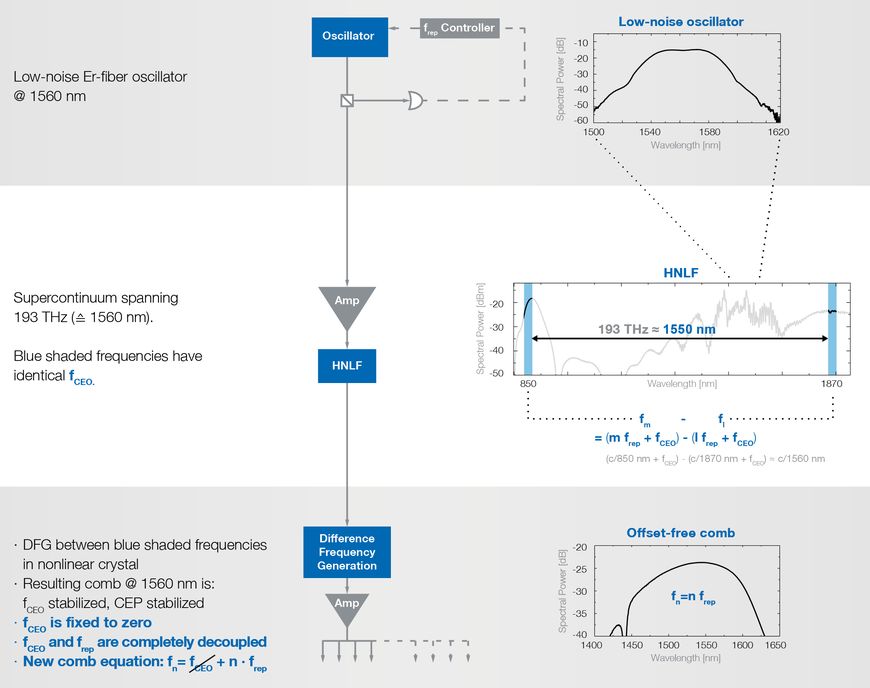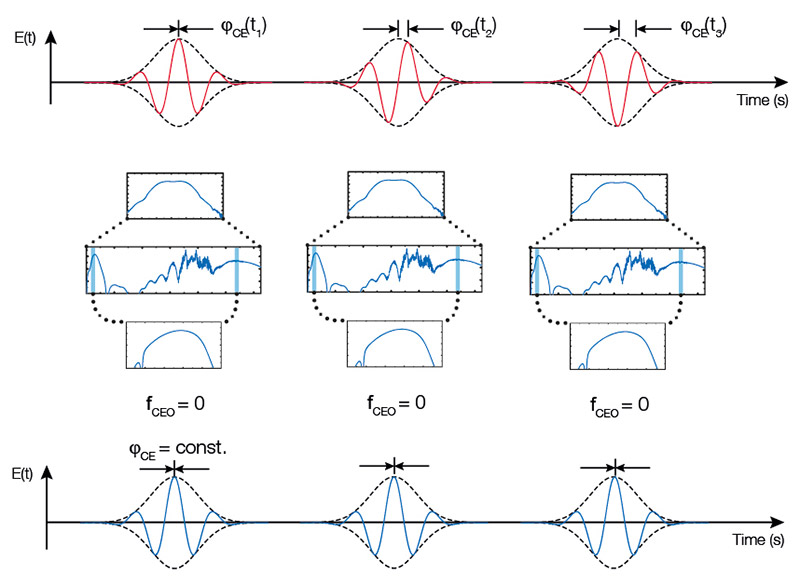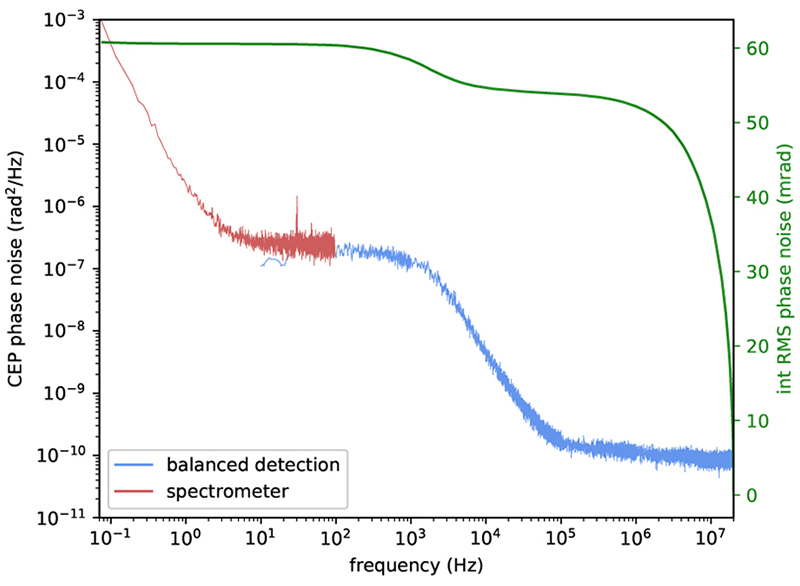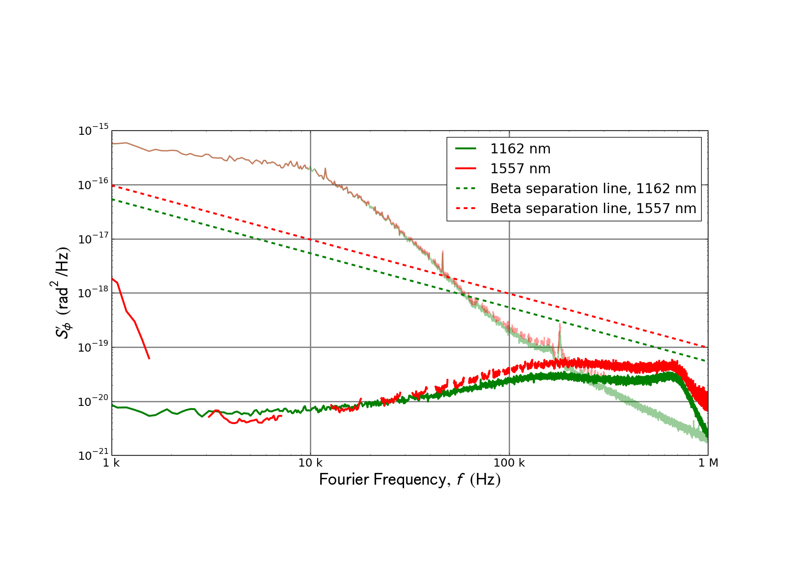CERO-Technology
"Zero fCEO" for Difference Frequency Combs (DFC)
- Effective fCEO-locking bandwidth = 200 MHz (repetition rate)
- Ultra low phase noise fCEO
- Perfect for use with optical reference, fn = nfrep
(Puppe et al., Opt. Lett. 41, 8, 2016) - Narrow free running linewidth
- Highest stability
- Simple and reliable
- Passive, all-optical phase-lock

CERO-technology at a glance
The operating principle of the offset-free Difference Frequency Comb (DFC) relies on generating a broadband supercontinuum from the output of a low noise Er-fiber mode-locked oscillator and subsequent optical difference frequency generation (DFG) between the low- and high-frequency parts of the octave spanning spectrum in a nonlinear crystal. The most important features are an improved stability and a more simple and reliable, all passive frequency offset stabilization. The comb is free from fluctuations of the offset-phase and offset-frequency due to the common mode suppression of the two parts of the original spectrum. Additionally, the carrier envelope offset frequency fCEO of the DFC is fixed to zero.
- Generation of a broadband supercontinuum with Er3+-fiber oscillator and nonlinear fiber
- Difference frequency generation between the lower and upper spectral parts of the supercontinuum in a nonlinear crystal
- Both spectral parts have identical fCEO
- The resulting comb is carrier envelope phase stabilized and fCEO is fixed to zero
- TOPTICA patent (DE102004022037)

The passive all optical fCEO stabilization has distinct advantages with respect to the conventional f-to-2f-interferometer approach. This has been pointed out by several major players in the field of frequency metrology (Krauss et al., Opt. Lett, 36, 540 (2011)). The biggest advantage of the passive stabilization is that it is not limited by electronic noise. Additionally, no carrier envelope offset beat alignment or complicated drift compensation are required and the absence of carrier envelope offset locking electronics reduces the complexity of the electronics package significantly. The only adjustable parameter is the repetition rate of the DFC. It can easily be stabilized to any suitable radio frequency (RF) reference.
Advantages of CERO technology
- DFG in the literature
TOPTICAs frequency comb DFC shows quadratic scaling of the phase noise with frequency. This textbook like behavior has been shown to a remarkable degree. The DFC behaves like an elastic tape with a true fixpoint at zero. An ideal system to be combined with an optical reference. Characterization of a DFG comb showing quadratic scaling of the phase noise with frequency, T. Puppe et al., Optics Letters Vol. 41, Issue 8 (2016)
“The DFG comb possesses a vanishing carrier envelope offset frequency that permits the construction of a simple and thus potentially more stable optical clockwork.“ Zimmermann, Gohle, Holzwarth, Udem and Hänsch, Opt. Lett., 29, 310 (2004)
“This all passive approach provides extremely reliable and rigid locking of fCEO on both short and long time scales”, Krauss, Fehrenbacher, Brida, Riek, Sell, Huber, and Leitenstorfer, Opt. Lett., 36, 540 (2011)
“… in this nonlinear process the phases of the two pulses add up with different signs, leading to CEP cancellation and resulting in passive, all-optical phase stabilization.”Manzoni, Cerullo, and De Silvestri, Opt. Lett., 29, 2668 (2004)
“The unique feature … is that fCEO of the DF is zero without any servo-loop feedback system; i.e., the waveform is self-stabilized in the resultant pulse train.” “The generated phase-stable pulses may - after preamplification - be suitable for seeding high-gain Ti:sapphire amplifiers and (or) the oscillator itself.”Fuji, Apolonski and Krausz, Opt. Lett., 29, 632 (2004)
- Brochure
Brochure: Difference Frequency Comb



